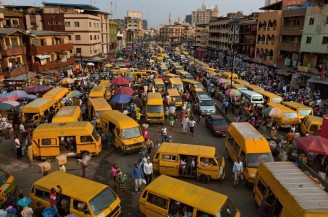Blog / Leadership & Transformation
Mobility-as-a-Service and Other Smart Mobility Trends
Categories

In today’s post, the professor of our Master's in Global Smart City Manager, Eduard J Alvarez-Palau tackles the smart mobility trends and focuses on different manifestations of Mobility-as-a-Service (MaaS) around us.
After several years of waiting for a revolution in mobility and transport systems, we just realized the transition has happened without us being aware of it. Many of us still think of drones, the hyperloop or electric vehicles as the main drivers of change. The truth is though, that it is another technology that has broken out into our society causing a strong disruption of pre-existing dynamics. New business models based on the emerging digital platforms have suddenly expanded, causing a paradigm shift in terms of transport and urban mobility.
MaaS Around Us

First, we’re going to take a look at the different services that have emerged. And later at what the smart mobility trends have in hold for us.
Carsharing & Carpooling
The first major change is in relation to the ownership of the vehicles in itself. Under the umbrella of the sharing economy, there are numerous platforms offering to carshare and carpool services to take full advantage of the idle capacity of the capital and goods. The carsharing model allows the owner of a vehicle to rent it when he is not using it.
Carpooling, on the other hand, consists of combining driver and passenger itineraries to share routes and thus optimize the spatial expression of mobility. Traditional companies, however, have not been left behind. Understanding that the purchase of a vehicle is unattractive due to the high cost and the rapid loss of value of the new vehicles, they have launched popular initiatives such as leasing or renting, for the use of vehicles for a monthly fee.
Ride-hailing
A second example are the ride-hailing models. In this case, the platforms link citizens with drivers offering a specific mobility service. The controversy caused by these applications has been major, especially in the countries where taxis had major market shares, and whose regulation required the use of driver licenses to operate.
Freight transport
Just as urban mobility is changing, so is freight logistics. The new digital platforms have been launched to respond to several problems. The most visible one is the last mile, or also commonly called home-delivery. Supermarkets, shops or restaurants take advantage of these applications to outsource delivery services. Once an online order arrives, they do not have to worry about managing routes, fleets or employees. Besides, it allows them to increase their reach and market share. Another major problem solved is the so-called freight forwarding service. Digital platforms put in contact manufacturers with truck drivers, so they can optimize their return journeys and avoid going back home with empty cargo.
Future of Mobility
Many sectors are disrupted, new markets emerge, existing ones converge or decline. The way people and products are moved is shifting. And Mobility-as-a-Service (MaaS) is just one of the technology-driven disruptive trends, but it’s together with electrification of vehicles (EVs) and connected and autonomous vehicles (CAVs) that it drives unprecedented change in the mobility ecosystem.
Electric vehicles
Electric vehicle take-up is gathering momentum. However, for it to reach its full potential, a number of societal and behavioral changes are required. There are already governments that offer subsidies or financial incentives to the buyers, which have proven effective. The overall goal here would be to lower the total cost of ownership for the end-users. A significant increase in public charging points is needed to give users confidence and to support the uptake.
Connected and Autonomous Vehicles
Connected and Autonomous Vehicles (CAVs) are altering the way people and goods are moved. It could improve safety and congestion. It would also open up independent mobility to younger or older travelers who might be more excluded by the current model.

The next step from MaaS would be the creation of an open-source, decentralized mobility aggregation marketplace. The advantage of having all providers have access to all end users contributes to increased efficiency. By leveraging blockchain technologies, the Internet of Mobility could transform mobility on a global scale. But that’s a topic for another time.
Make your move and shape a future worth living!




